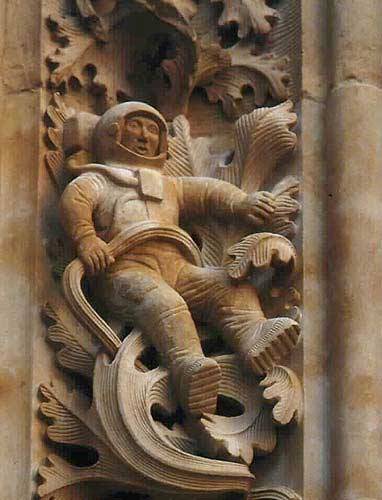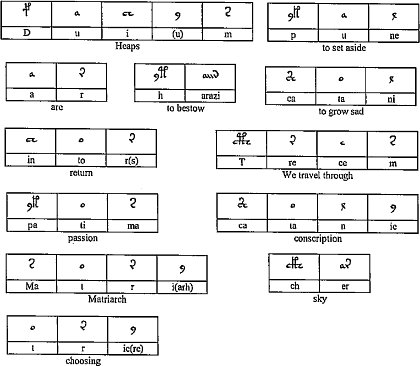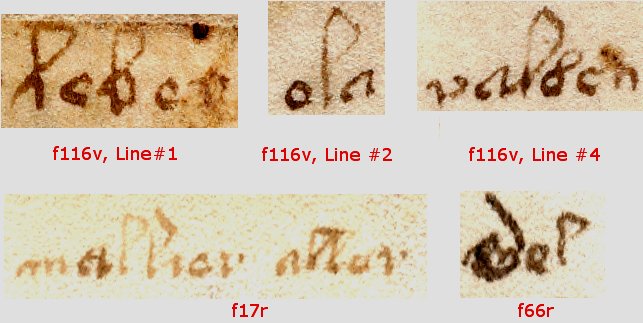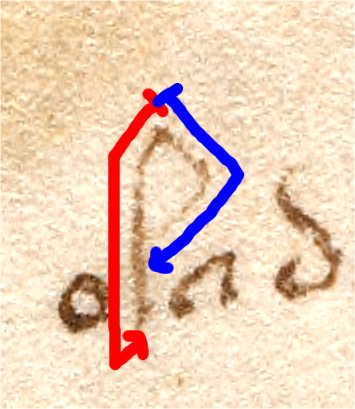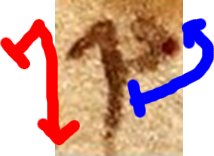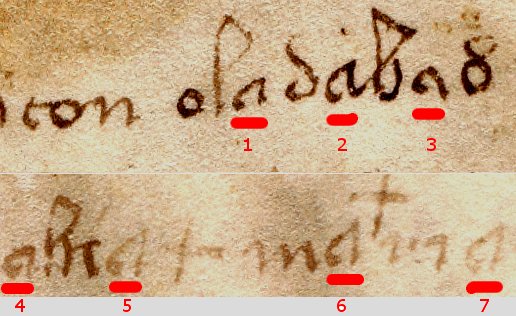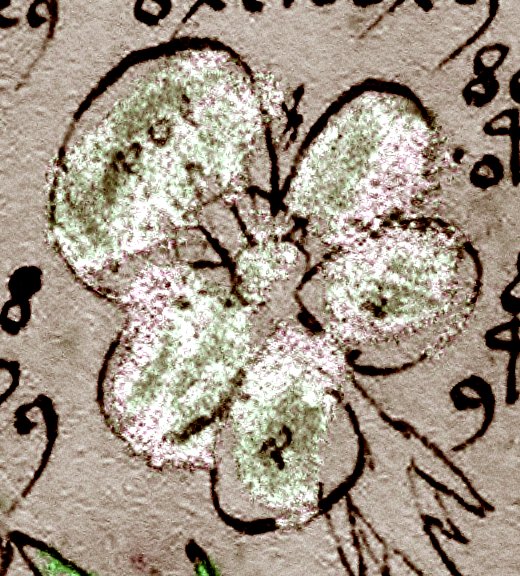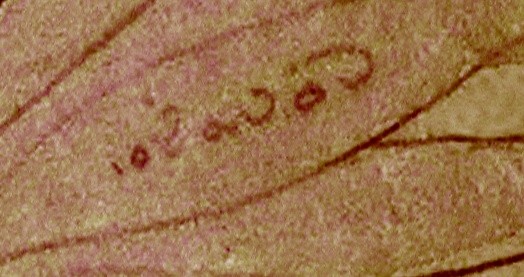Just a quick note on Voynich cipher cribs.
Even though I’ve built up a fairly substantial set of (what I think are) reasonably pragmatic deductions about how Voynichese works, actually finding any way to use those to get at the rest has (perhaps unsurprisingly) proved difficult. To recap, I suspect that…
- “4o” steganographically codes for “lo” (and perhaps “la” as well, via some subtle letter formation difference we’re too close to the text to notice)
- “a[i][i][i]v” steganographically enciphers Arabic digits using the startpoint of the apparent scribal flourish
- “a[i][i][i]r” verbosely enciphers various rare plaintext letters (such as ‘z’)
- “e[e][e]” and “ch” / “sh” verbosely encipher vowels
- “-8” functions as a scribal shorthand symbol for “contractio”
- “-9” functions as a scribal shorthand symbol for “suspensio”
- “8-” enciphers “et” or “&”, as well as for Arabic numeral combination (into large numbers)
- “t-” directs the decipherer to a horizontal Neal key (usually on the top line of a paragraph)
- “p-” directs the decipherer to a vertical Neal key (usually down the first column of a paragraph)
- “k-” and “f-” I’m not sure about. 🙂
- “ot” / “op” / “ok” / “of” / “yt” / “yp” / “yk” / “yf” verbosely encipher fixed letters (hence their use in labels)
- “or” / “ol” / “ar” / “al” verbosely encipher fixed letters
- “cXh”, where the ch’s crossbar strikes through a gallows, enciphers the shorthand stroke “subscriptio”
- (etc, etc)
Of course, I happily admit that all, some or none of these may well be wrong: the issue I’m discussing here is what to do next if (like me) you happen to think that there stands a good chance that these are right. Basically, where now?
It struck me a few days ago that the “aiiv” pattern has a rough analogue in part of the Florentine shorthand used by Leonardo da Vinci: as I discussed in my post on Leonardo’s handwriting, LdV used “i-with-a-circle” for ‘uno‘, and “i-with-a-circumflex” for ‘una‘. Now, today’s thought is that if (say) “aiv” similarly enciphers “uno/una”, then what would happen if we went looking for words in the astronomical quire #9 (‘Q9’) for words of the form “verbose letter” + “aiv”, just in case they encipher “l-una”, i.e. “luna”?
For example, if we look at the topmost line of f67r1 (the thrice-exalted APOD page, with what is manifestly the moon in the middle), the fourth word along is “osaiiv”. Now, I suspect that this is an example of coyness on the VMs’ author’s part, insofar as “os” probably doesn’t exist in the cipher system (i.e. the pair should actually read “or”), so he/she has used “os”as a kind of secondary misdirection, perhaps suspecting that “oraiiv” might look slightly too crackable. 🙂
So, might “luna” be the first word in the VMs to be genuinely deciphered? It’s certainly possible, but I’d hesitate running down to the betting shop just yet: all the same, it might help point to ways of sneaking past the pack of rottweilers on the door. The titles of the Q9 planet pages might all be there on their respective top lines, if we but gothink to go looking for them…
